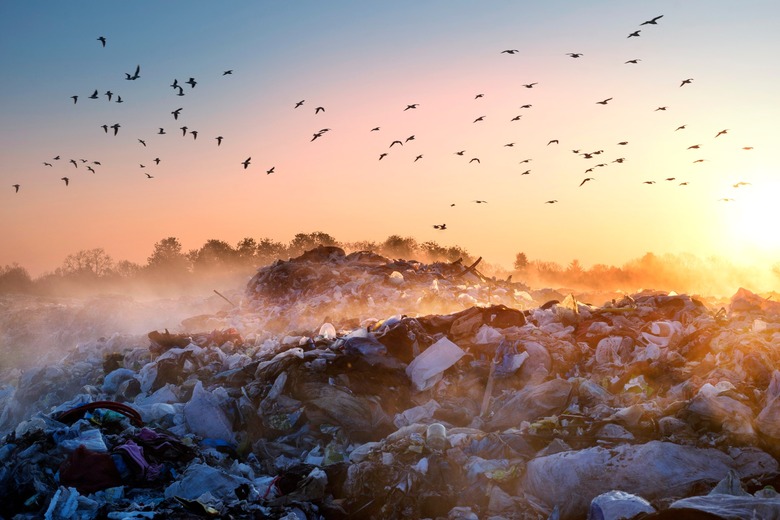Our Landfills Are Destroying The Earth, Study Shows
Our landfills are much bigger climate change drivers than we previously believed, a new study has shown. In the paper, researchers argue that decades of buried trash is now releasing tons of methane emissions into the atmosphere, driving globally changing temperatures that could lead to more climate change issues.
This isn't at all a shocking discovery. It has been known for some time that open landfills are a perfect place for belches of methane to come bubbling up as old vegetables, appliances, and other household waste sit there and rot away.
However, the new study argues that methane emissions from landfills are exponentially higher than was previously reported to federal regulators. Up to three times higher, in fact. The researchers involved say they measured around 20 percent of the roughly 1,200 large, operating landfills in the United States.
During these sessions, they found evidence that landfills are indeed a significant driver for the release of methane and, thus, a huge drive for climate change as a whole. Riley Duren, a former NASA engineer and scientist who helped with the study and has since founded Carbon Mapper, says that we have mostly been in the dark when it comes to the emissions from landfills.
But this new study provides very damning evidence that suggests the methane emissions from operating landfills is far beyond anything we might have imagined. This is, of course, disturbing because of the consequences the runaway greenhouse effect might have on Earth.

While methane does last a shorter time in the atmosphere than carbon dioxide, it is far more potent, the researchers say, with it causing a warming effect up to 80 times more potent than the same amount of CO2 over a 20-year period. That's a huge issue as these landfills are constantly pumping methane into our atmosphere.
The Environmental Protection Agency currently estimates that landfills are the third largest source of human-caused methane emissions, with them emitting as much greenhouse gas as 23 million gas-driven cars over the course of a year. However, these estimates have always been based on computer modeling as it is difficult and dangerous for workers with methane "sniffers" to properly measure the emissions at a landfill. (via The New York Times)
That's why this new study relied heavily on airplane flyovers and imaging spectrometers to help categorize the methane rising from landfills around the U.S. With multiple hotspots detected throughout the landfills, as well as sizeable methane plumes that can last months or even years, these emissions are certainly much higher than we were led to believe by computer modeling.
Luckily, many landfills are actually equipped with pipes meant to carry the methane emitted from rotting garbage away from the area, where it can be burned off or used to generate electricity and heat. But, as with anything, pipes and wells are prone to leak, releasing some of that methane back into the atmosphere.
The researchers argue that landfills will need to pinpoint those leaks and fix them, not only so we can get an even more accurate view of methane emissions from landfills but also so we can ensure the safety of any workers who must travel through those landfills for any reason.
Of course, there are also other ways to help cut down on the methane being produced in these landfills, and that's to find new ways to get rid of waste, including composting organic waste.
